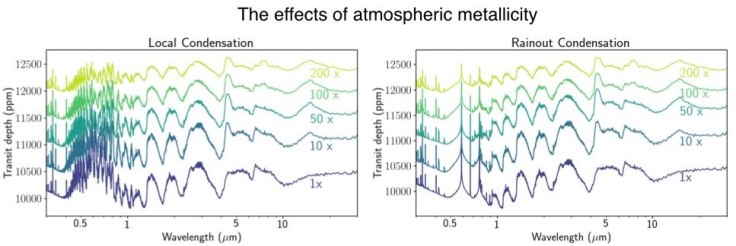Paper: This link will take you to arXiv, an open access pre-print server, with the associated MNRAS publication and citation.
Full Grid: This is where you can find all of the model files in easy .tar folders.
GitHub: Here you will find a python code which will allow you to rescale any individual model in the grid to the desired planetary parameters.
Abstract: Simulated exoplanet transmission spectra are critical for planning and interpretation of observations and to explore the sensitivity of spectral features to atmospheric thermochemical processes. We present a publicly available generic model grid of planetary transmission spectra, scalable to a wide range of H2/He dominated atmospheres.} The grid is computed using the 1D/2D atmosphere model \texttt{ATMO} for two different chemical scenarios, first considering local condensation only, secondly considering global condensation and removal of species from the atmospheric column (rainout). The entire grid consists of 56,320 model simulations across 22 equilibrium temperatures (400 – 2600 K), four planetary gravities (5 – 50 ms-2), five atmospheric metallicities (1 – 200x solar), four C/O ratios (0.35 – 1.0), four scattering haze parameters, four uniform cloud parameters, and two chemical scenarios. We derive scaling equations which can be used with this grid, for a wide range of planet-star combinations. We validate this grid by comparing it with other model transmission spectra available in the literature. We highlight some of the important findings, such as the rise of SO2 features at 100x solar metallicity, differences in spectral features at high C/O ratios between two condensation approaches, the importance of VO features without TiO to constrain the limb temperature and features of TiO/VO both, to constrain the condensation processes. Finally, this generic grid can be used to plan future observations using the HST, VLT, JWST and various other telescopes. The fine variation of parameters in the grid also allows it to be incorporated in a retrieval framework, with various machine learning techniques.
The grid covers many aspects that we expect to explore in giant exoplanet atmosphere. The following show how some of those parameters will effect the measurements we make.





